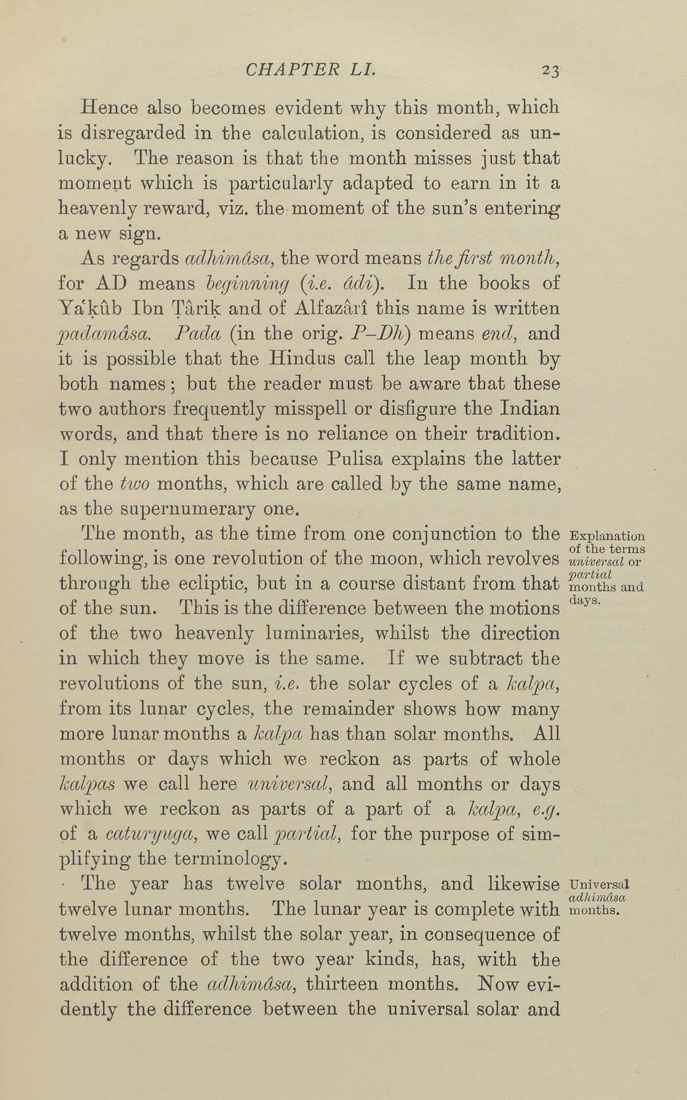CHAPTER LI. 23
Hence also becomes evident why this month, which
is disregarded in the calculation, is considered as un¬
lucky. The reason is that the month misses just that
moment which is particularly adapted to earn in it a
heavenly reward, viz. the moment of the sun's entering
a new sign.
As regards adJiimdsa, the word means the first month,
for AD means beginning (i.e. ddi). In the books of
Ya'kub Ibn Tarik and of Alfazari this name is written
padamdsa. Pada (in the orig. P-Dh) means end, and
it is possible that the Hindus call the leap month by
both names; but the reader must be aware that these
two authors frequently misspell or disfigure the Indian
words, and that there is no reliance on their tradition.
I only mention this because Pulisa explains the latter
of the tivo months, which are called by the same name,
as the supernumerary one.
The month, as the time from one conjunction to the Explanation
p ^^ • • ii- cii 1-1 1 of the terms
following, IS one revolution of the moon, which revolves universal or
through the ecliptic, but in a course distant from that Sonths and
of the sun. This is the difference between the motions ^^^'^'
of the two heavenly luminaries, whilst the direction
in which they move is the same. If we subtract the
revolutions of the sun, i.e. the solar cycles of a kcdpta,
from its lunar cycles, the remainder shows how many
more lunar months a kcdpa has than solar months. All
months or days which we reckon as parts of whole
kalpas we call here universal, and all months or days
which we reckon as parts of a part of a kalpa, e.g.
of a caturyuga, we call partial, for the purpose of sim¬
plifying the terminology.
■ The year has twelve solar months, and likewise universal
, , ., . 1-1 adhimdsa
twelve lunar months, ihe lunar year is complete with months.
twelve months, whilst the solar year, in consequence of
the difference of the two year kinds, has, with the
addition of the adhimdsa, thirteen months. Now evi¬
dently the difference between the universal solar and
|








